- Home
- Collins, Max Allan
Chicago Lightning : The Collected Nathan Heller Short Stories
Chicago Lightning : The Collected Nathan Heller Short Stories Read online
This book is a work of fiction. Names, characters, businesses, organizations, places, events, and incidents either are the product of the author’s imagination or are used fictitiously.
Text copyright ©2011 Max Allan Collins
All rights reserved
No part of this book may be reproduced, or stored in a retrieval system, or transmitted in any form or by any means, electronic, mechanical, photocopying, recording, or otherwise, without express written permission of the publisher.
Published by Thomas & Mercer
P.O. Box 400818
Las Vegas, NV 89140
ISBN: 978-1-61218-091-5
For Bob Randisi—
who, in 1984,
asked me to write a
Nate Heller short story
TABLE OF CONTENTS
Introduction
Kaddish for the Kid
The Blonde Tigress
Private Consultation
The Perfect Crime
House Call
Marble Mildred
The Strawberry Teardrop
Scrap
Natural Death, Inc.
Screwball
That Kind of Nag
Unreasonable Doubt
Shoot-Out on Sunset
About the Author
Although the historical incidents in these stories are portrayed more or less accurately (as much as the passage of time and contradictory source material will allow), fact, speculation and fiction are freely mixed here; historical personages exist side by side with composite characters and wholly fictional ones—all of whom act and speak at the author’s whim.
“Chicago lightning”–
1930s Underworld slang for gunfire.
Back in 1981, when I began work on my first Nathan Heller novel, True Detective, the historical mystery was no hot trend I was latching onto. I was just looking for a way to write my favorite kind of mystery—the private eye story—in a manner that didn’t seem anachronistic.
A lot of smart people—my then-agent, Knox Burger; my mentor, Donald E. Westlake—begged me to rewrite the novel in the third-person, and to make Nate Heller a cop or a reporter or anything but a private eye. That genre was dead, or at least an embarrassing niche, and I had hold of a great Chicago yarn that could be the breakthrough of my career…if I would just abandon my embarrassing insistence on writing it as a private eye story.
I remember Don saying, “Do you really think anybody wants to read a first-person private eye novel that’s as long as Moby Dick?”
It was sobering.
I eventually broke with Burger, who was willing to “show the book around” but was painfully unenthusiastic. Once editor of the legendary Gold Medal line of paperbacks, Knox had always made for me a downbeat advocate. When my Writers Workshop instructor, Richard Yates, first approached Burger about looking at my stuff, Burger did so, only to say: “I’m afraid young Collins is a blacksmith in an automotive world.” He wasn’t wrong, but finally he wasn’t right for me.
Don was another matter. He was a god. My first published novel, Bait Money (1973), was an homage to his work. Fortunately, I had also shown the book to another mentor (and god) of mine—Mickey Spillane—and Mickey had loved it.
“I think this is the best private novel I ever read!” Mickey said over the phone.
A good thing I was a tough guy writer, or my eyes might have welled up.
See, I got hooked on private eyes when I was still in grade school—a spate of P.I. series (Peter Gunn, 77 Sunset Strip, Perry Mason, The Thin Man, Mike Hammer, etc.) made up the latest TV craze, driving the adult westerns of Gunsmoke, Have Gun Will Travel and Maverick if not into submission, then into second position among adolescents of all ages.
As part of the first television generation, I was always a kid who wanted to read the book a movie or TV show was based on—I was probably the only seven year-old who ever tried to read Thorne Smith’s sexy ghost story, Topper (inspired by the ancient sitcom that was partially written by a young Stephen Sondheim!). At age eight, Tarzan movies had led me to Tarzan comics and, of course, the novels of Edgar Rice Burroughs. Sherlock Holmes flicks on TV meant I simply had to get to know Sir Arthur Conan Doyle.
So it was no surprise that during the TV private-eye craze, I immersed myself in Dashiell Hammett, Raymond Chandler, Erle Stanley Gardner and Mickey Spillane. The key figure there is probably Spillane, because the paperback racks (and used bookstores) were swimming in Mike Hammer imitations. I read every private eye paperback I could lay my hands on, and my first sex education lessons came courtesy of Richard Prather’s leering Shell Scott novels.
Starting in the ninth grade, I began trying to write my own private eye novels, and while I never found a publisher for any of the half dozen or so (thank God), I learned a lot. By the time I got out of high school, I had professional skills few young writers possessed. And maybe some talent.
Along the way, however, a couple of things happened—for one, spies and their high-tech world had taken the place of private eyes in popular culture. In fact, my last high school novel was about a spy named (are you ready for this?) Erik Flayr. There’s a little noted irony here—Mickey Spillane was on his famous decade-long hiatus between Hammer novels—from Kiss Me, Deadly in 1952 to The Girl Hunters in ’62—and his paperback publisher, NAL, sought to fill the gap with a writer named Ian Fleming who had been branded the British Mickey Spillane. Signet even used the same cover artist.
Just when the Vietnam war was becoming a major campus issue, I was entering college, and antiheroes were taking over the screens (and paperback racks). After seeing the Lee Marvin/John Boorman film Point Blank, I got hooked on the source material, the hard-bitten series about one-named thief Parker (Don Westlake writing as Richard Stark). Jim Thompson, Lawrence Block and Dan Marlowe were also writing “crook books,” and I was already a fan of James M. Cain (The Postman Always Rings Twice, Double Indemnity) and W. R. Burnett (Asphalt Jungle, High Sierra). The notion of writing about a criminal protagonist seemed a simple step to one side from tough detectives.
Among my other enthusiasms growing up were police procedurals. The obsession of my childhood was the DICK TRACY comic strip (never dreaming I would take the strip over from Chester Gould himself one day), and I loved Jack Webb’s 1950s Dragnet TV series as well as a paperback series commissioned to take advantage of Webb’s tube success—Ed McBain’s great, dialogue-driven 87th Precinct crime novels.
So in addition to training to write private eye novels, I felt ready to take on police procedurals as a form. But there was a problem. In the late ’60s and early ’70s, cops were guys with nightsticks clubbing my friends at Chicago’s 1968 Democratic Convention.
So crook books it was.
My early career consisted of novels about a Parker-like thief known as Nolan and a Vietnam-traumatized hitman called Quarry. Yet I still dreamed of finding a meaningful way to write about private eyes—my mystery-writing amateur sleuth Mallory was essentially an unlicensed private eye, and appeared in five novels during this same period. But the traditional private eye himself seemed to have no place in contemporary pop culture. Sam Spade, Phillip Marlowe and Mike Hammer were fondly remembered, but frozen in the amber of their times.
Well, I was wrong.
Plenty of writers came along in the later ’70s and beyond to find interesting ways to tell private eye stories in modern dress (eventually so would I, in the graphic-novel series Ms. Tree). But back around 1974, I was longing to write the pure P.I., the tough/tender guy in the trenchcoat and fedora with a bottom-drawer bottle of wry. I didn’t w
ant to update him, nor did I wish to plop him down in contemporary times like a drunk who tumbled off a time machine.
This classic character—as devised by Hammett, refined by Chandler, and redefined by Spillane—is a prototypical American hero, a child of the Old West by way of the Great Depression and a world war (or two), whose voice is as wonderfully, distinctively American as Huckleberry Finn’s. I remained enthralled by Chandler’s first-person poetry, and fascinated by Spillane’s war-traumatized knight in a surrealistic world.
But it was Hammett who showed the way. Back in ’74, I was re-reading for the umpteenth time the greatest of all detective novels, The Maltese Falcon, when I noticed the copyright, which stopped me long enough to muse, “1929…year of the St. Valentine’s Day massacre—Al Capone and Sam Spade were contemporaries.”
In the comics business (like Spillane and Hammett, I’m a veteran of that field), a light bulb would’ve popped on above me: the private eye had been around long enough to exist in an historical context!
In other words, rather than have Phillip Marlowe meet an Al Capone type, Al Capone could meet a Phillip Marlowe type.
My first attempt at this concept was a comic strip called “Heaven and Heller” about a Chicago private eye, one Nate Heller, whose opening case had to do with Houdini’s widow and a seance designed to bring back her dead husband. Drawn by the great sports cartoonist Ray Gotto (“Ozark Ike”), the strip sold to Field Syndicate (Chicago again); but before it really got into the pipeline, the editor who bought it was fired, and all his projects dropped. It was shown elsewhere but not bought—story strips were even deader than the private eye novel.
In the meantime, the film Chinatown, a one-season TV show called Banyon, and a few novels by a handful of top-notch mystery writers (Andrew Bergman, Joe Gores, Stu Kaminsky) were demonstrating that the “period” private eye story was becoming a niche within the genre. The late great Stephen Cannell created a short-lived TV series called City of Angels, with Wayne Rogers spot on as a Bogart-ish private eye, that convinced me I was on the right track.
But I didn’t just want to do a period piece: I wanted to do an historical novel. Next to mysteries, historical fiction had been my favorite genre growing up, and in particular I adored the (now unfortunately forgotten) Samuel Shellabarger, who wrote such vividly told tales as Captain from Castille and Prince of Foxes, in which swashbuckling fictional heroes mingled with historical figures. My idea was to create a private eye who could enter history in the same fashion, and “solve” famous unsolved cases.
As a Midwesterner (and old Untouchables fan), I figured Chicago made the ideal setting, and—gathering a team of Windy City research experts (led by literacy advocate George Hagenauer and comics editor Mike Gold)—I prepared the first novel as if I were writing the definitive nonfiction treatment of the assassination of Mayor Anton Cermak.
Then I wrote a mystery novel instead: True Detective (1983) was indeed the longest first-person private eye novel ever written, if not really rivaling Melville’s long Dick, and eventually being out-word-counted by my later Stolen Away (1993). Both novels won the “Shamus” Best Novel award from the Private Eye Writers of America in their respective years.
Nathan Heller was given an elaborate background—father, mother, grandparents, unusual trappings for a P.I. Like Mike Hammer, Heller is a battle-scarred veteran of World War Two; unlike Hammer, Nate takes us along with him to Guadalcanal (The Million Dollar Wound, 1986) to see how he got that way. He would marry, and would be a father—not typical private eye, well…fodder.
In the course of thirteen novels, Heller has solved the Lindbergh kidnapping, Huey Long’s assassination, Bugsy Siegel’s gangland hit, Sir Harry Oakes’ locked-room murder, the Roswell incident, the Black Dahlia case, and most recently (in Bye Bye, Baby) the murder of Marilyn Monroe. He has played Paul Drake to Clarence Darrow’s Perry Mason in Damned in Paradise (1996) and found Amelia Earhart in Flying Blind (1998). He does a lot more than just find Amelia, actually—let’s just say Heller has a unique way of learning whether or not said client’s wife is staying faithful. Unlike Chandler’s Marlowe, Chicagoan Heller does not always play by the private-eye rules. In True Detective, I made a point of him violating every tenant of Chandler’s famous “mean streets” code, including taking a bribe and despoiling a virgin.
Heller’s “bad boy” qualities seem to endear him to women readers, which to his creator is very gratifying (and a relief). In the post WWII war novels, Nate is frequently as psychotic as Mike Hammer and has often served up rough justice that goes beyond just about anything I can think of in private eye fiction. I find it interesting that readers accept Heller’s homicidal tendencies so casually. Sign of the times, perhaps, or maybe Nate is good enough company that we forgive him the occasional righteous slaying.
I do think that part of what separates Heller from the pack is the combination of influences. Many devotees of Hammett and Chandler dislike and/or dismiss Spillane. Heller, who has also been compared to Archie Goodwin (which I hope is apt, because Rex Stout is another favorite of mine), combines aspects of Spade, Marlowe and Hammer. I don’t think many mystery writers have shaken up that particular cocktail.
It’s been my hope that Nate could enjoy the conventions—even the cliches—of the classic private eye and yet be a fully dimensional character, growing and changing over the years. That the mysteries themselves are real—history mysteries—makes for challenging research, and a rewarding experience for a writer…for readers, too, I hope. The most unusual accolade Heller and I have received is the inclusion of the novels in the bibliographies of a number of non-fiction works. Not bad for a mystery writer and a fictional P.I.
Gathered in this collection is every Heller short story to date, spanning the length of Heller’s career as recorded thus far. Omitted only are three short novels that will be gathered in their own collection. I have arranged the stories not in their order as written, but chronologically by the years in which they are set.
One challenge of writing Heller’s memoirs is that they jump around in his life, which means I have to keep track of the arc of his characterization as well as the continuity of where he is and where he has been. And I hope you will note differences in Nate, as a man and as a detective, according to his age and the time period in which he’s operating.
When I was asked by AmazonEncore to gather all of the Heller short stories into one collection, I admit to being a little surprised by how many of them there are. Initially we included the three novellas as well, but the book would have been massive, even for a Heller. We would have given Moby Dick a run for it.
While I take pride in my ability to work as a storyteller in various forms, I admit I consider myself first and foremost a novelist. My wife Barb—with whom I write the “Trash ’n’ Treasures” mystery series (most recently Antiques Knock-Off)—considers herself primarily a short story writer, and enjoys working in miniature. She’s been much lauded for that. I am instinctively a novelist, and I suppose that most of these tales play as little novels.
Even at the University of Iowa, under Dick Yates, Gina Berriault, Walter Tevis and other gifted authors, I always worked on novels, submitting to the Writers Workshop not the expected short stories, but chapters. It wasn’t that I didn’t like short stories, but in the late ’60s and early ’70s, the market for them was already shrinking. Getting a story published in Ellery Queen Mystery Magazine seemed like the longest of long shots. The novel field, particularly paperback originals, appeared an easier place to break in. And it was.
I believe my first short story sale was “The Strawberry Teardrop,” also the first Heller short story (written after True Detective). I only wrote it because my writer pal Bob Randisi invited me to contribute to a Private Eye Writers of America anthology. Most of the stories here were written by invitation for various editors of anthologies.
For me, the real pleasure of writing a Heller short story is that I can get away from the signature “famous crime” app
roach of the novels and allow Nate to explore the dirtier, dingier, lesser known corners of Chicago crime (though we get to California, Ohio, and Florida, as well).
My chief research associate and prized collaborator on the Nathan Heller memoirs remains George Hagenauer, who literally wrote the book on true-crime pulps (True Crime Detective Magazines, 2008, with Dian Hanson and Eric Godtland). George and I both have poured through old magazines, newspapers, and true-crime anthologies, searching out gems of Chicago crime that might have the makings for a Heller short story. Like the novels, the stories are firmly rooted in fact. Very often Heller fills in the role a cop, insurance investigator or even private eye played in real life.
The idea of Heller was to set a private eye and his stories in the context of the era during which Hammett, Chandler and Spillane first spun their yarns. So I take great pleasure and a certain pride in turning these little-known crimes into the kind of story that might have been published in the great pulp, Black Mask, where Hammett and Chandler appeared, and where Mickey Spillane read the work of his childhood idol, Carroll John Daly, father of the fictional private eye.
And, as you might imagine, I find it gratifying that the Shamus-nominated “The Blonde Tigress” was one of the first stories purchased by Ellery Queen Mystery Magazine to launch their new Black Mask category.
My thanks to the editors of the anthologies and magazines where these stories originally ran, and to editor Alan Turkus, for having the vision to bring all of the Heller memoirs back into print.

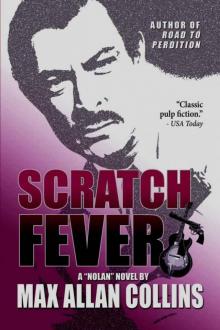 Scratch Fever
Scratch Fever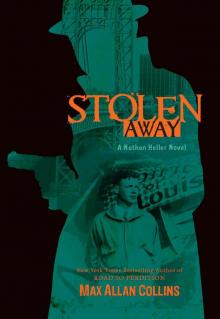 Stolen Away
Stolen Away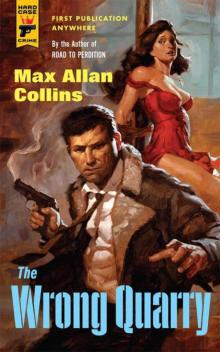 The Wrong Quarry (Hard Case Crime)
The Wrong Quarry (Hard Case Crime)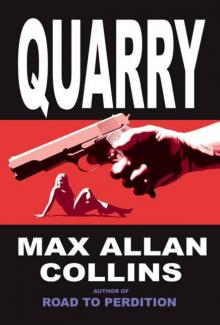 Quarry
Quarry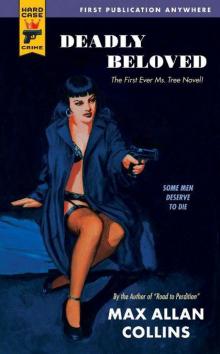 Hard Case Crime: Deadly Beloved
Hard Case Crime: Deadly Beloved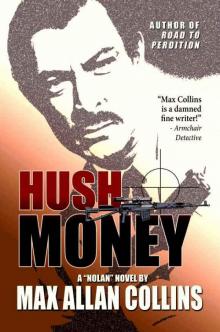 Hush Money
Hush Money The Million-Dollar Wound
The Million-Dollar Wound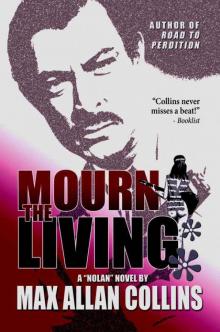 Mourn The Living
Mourn The Living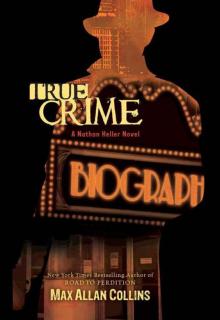 True Crime
True Crime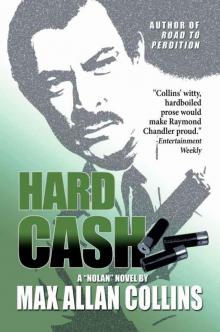 Hard Cash
Hard Cash Triple Play: A Nathan Heller Casebook
Triple Play: A Nathan Heller Casebook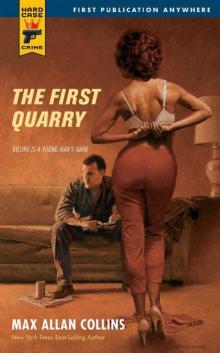 Hard Case Crime: The First Quarry
Hard Case Crime: The First Quarry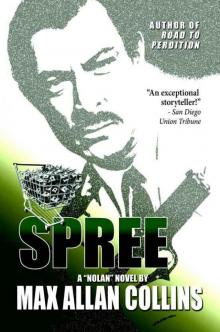 Spree
Spree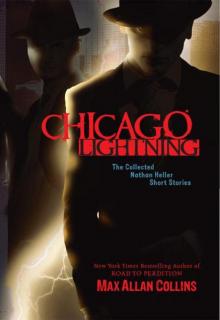 Chicago Lightning : The Collected Nathan Heller Short Stories
Chicago Lightning : The Collected Nathan Heller Short Stories Fly Paper
Fly Paper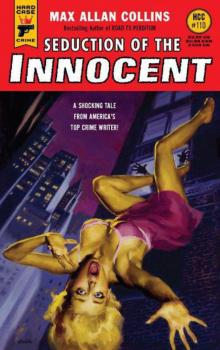 Seduction of the Innocent (Hard Case Crime)
Seduction of the Innocent (Hard Case Crime)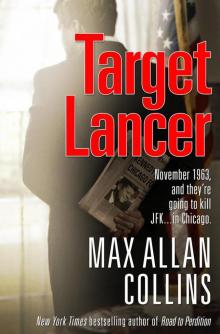 Target Lancer
Target Lancer